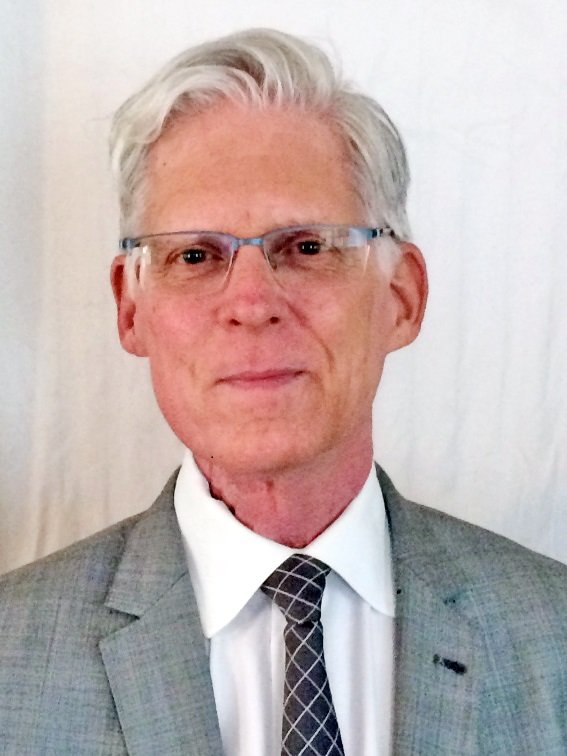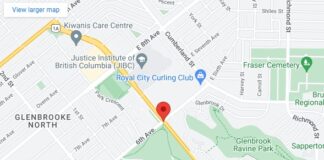BY RATTAN MALL

Photo submitted
DR. Curt T. Griffiths of Simon Fraser University’s School of Criminology (Surrey campus), who was consulted by the City of Surrey for its “Surrey Policing Transition Report” that Surrey Mayor Doug McCallum released on Monday, told The VOICE in an interview that the RCMP did not provide them with the detailed information that his team had requested.
The Surrey Policing Transition Report stated that the proposed Surrey Police Department operating model includes a staffing increase of 5% and consists of 1,150 employees: 805 police officers, 325 civilian positions, and 20 Community Safety Personnel (CSP).
On the other hand, according to the report: “The Surrey RCMP detachment has an authorized strength of 843 RCMP members as of 2019, although it currently has 51 vacancies. As a result, the Surrey RCMP has a funded strength of 792 officers.”

Photo by Jay Sharma of Mahi Photo Studio
After the report was released, the RCMP disputed those figures. They claimed in a press release: “The City of Surrey funds 843 police officers (90% paid by the City, 10% paid by the federal government).” It added: “Fifty-eight of these positions go to the Lower Mainland Integrated Teams (IHIT, IFIS, ICARS, PDS, ERT). In order to cover any temporary vacancies (due to transfers, gradual return to work, maternity / paternity leaves, sick leave, etc.), the RCMP provides 51 additional positions for Surrey Detachment. The City of Surrey currently employs 302 municipal employees at Surrey Detachment.”
Here is the interview:
VOICE: What information that you had requested from the RCMP was not provided?
GRIFFITHS: “Ideally, we would have liked to have some more detailed information…
One of the information I think would be important to look at and to have was they have 792 officers that are paid for by the City of Surrey. They are disputing that number. They say it’s 843 but the number is 792. What we would have liked to know, for example, is how many of those officers are deployable. In other words, of those 792, how many are on the road in uniform and patrol as opposed to say being behind a desk, in doing administrative work, because in policing you want to get as many frontline officers (out on the street) as possible – obviously if you want to do community policing, if you want to do community engagement, if you want to build relationships … if you really want to do community-focussed policing.
“So, a key question is: ‘How many officers of those 792 are deployed in frontline policing?’ And under the new policing plan that we’ve put forward, you’d have a 16-per-cent increase in the number of frontline officers. So that would have been good information to have had.
“Other information did come in; it came in very late. And other information, by agreement, was not released to the public because it’s sensitive policing information. A general one would be of the 792 – they dispute that number, but it’s 792 – how many of those are deployable frontline police officers? For example, how many officers are accommodated? In other words, officers who are not deployable because of injury or a woman officer who is pregnant …? So, at the end of the day, I am always interested in how many boots do you have on the ground, so to speak, because that is important for a community policing model?
VOICE: The RCMP came up with their own statement that said that they provide 51 additional positions for the Surrey Detachment. So, where do those positions come from?
GRIFFITHS: Here is the math: The City of Surrey pays for 792 officers. This information was gathered from City of Surrey finance department because they pay the bill. Second of all, the information comes from the provincial government which collects information from all the police services in British Columbia about how many officers they have. And the information of 792 also comes from Statistics Canada – it is a federal agency that does an annual police survey of departments; so, departments and detachments.
There are 51 unfunded positions that are vacant. If you do 792 and 51 or so, you get to the 843. But those positions are vacant. The other thing about the 792 – that includes 58 officers that are seconded or put on loan to special units. For example, Surrey detachment contributes members to the Integrated Homicide Investigation Team (IHIT) (and other) provincial integrated teams. So, there are already 58 of the 792 that aren’t deployable on the street in uniform; they are in provincial special units like IHIT that runs out of E Division [of the RCMP]. So, it’s even less than 792 in terms of potentially deployable officers. So those 51 positions that get the Mounties’ number which is 843 – there is nobody in those positions! Either that or the people are working for free! The City pays for 792 [officers], but with that you have to take out the 58 positions that are not deployable because they are the specialty units provincially and then, within the remaining number, I’d still like to know how many are on the ground. How many are out in the patrol cars doing community policing, responding to calls for service in a timely manner and so forth? So, that’s the numbers part of it.
GRIFFITHS added: “The point that I’ve made is that even if there were 843 [officers], the question is: Is that the best policing model for the City of Surrey? And my argument has been – and I live and work in Surrey; I am at the Surrey [SFU] campus of the School of Criminology – my argument is that the RCMP model doesn’t work anymore in a city as dynamic and as large as Surrey. This is a dynamic community. It’s the only community in Canada of over 300,000 people that does not have its own municipal police force and there’s a reason for that. The model doesn’t work.
“The RCMP model does not work in urban big-time policing. You don’t have the accountability. You don’t have a police force, for example. You aren’t able to hire and fire your chief. You get a commander who the RCMP assigns here at their discretion; so, he or she serves at the discretion of the RCMP, not of the City of Surrey. And the transfer in and out of officers makes it really difficult to have a police service that reflects the diversity of the community that it’s policing. That’s kind of a core objective of a police service is make sure that your officers reflect the diversity of the community that it’s policing. But it doesn’t and it never will because you might, for example, right now in Surrey have 50 or 60 South Asian officers, but tomorrow it could be none. They could be transferred to Manitoba or New Brunswick or wherever.
“It’s hard to build those long-term sustainable relationships with community and particularly communities of diversity when the officers are just rotating in and out of the community. The model doesn’t work. It’s not that the men and women in the RCMP aren’t doing the best job possible. They are. They are doing the best job they can. It’s just that the model doesn’t work here anymore.”













